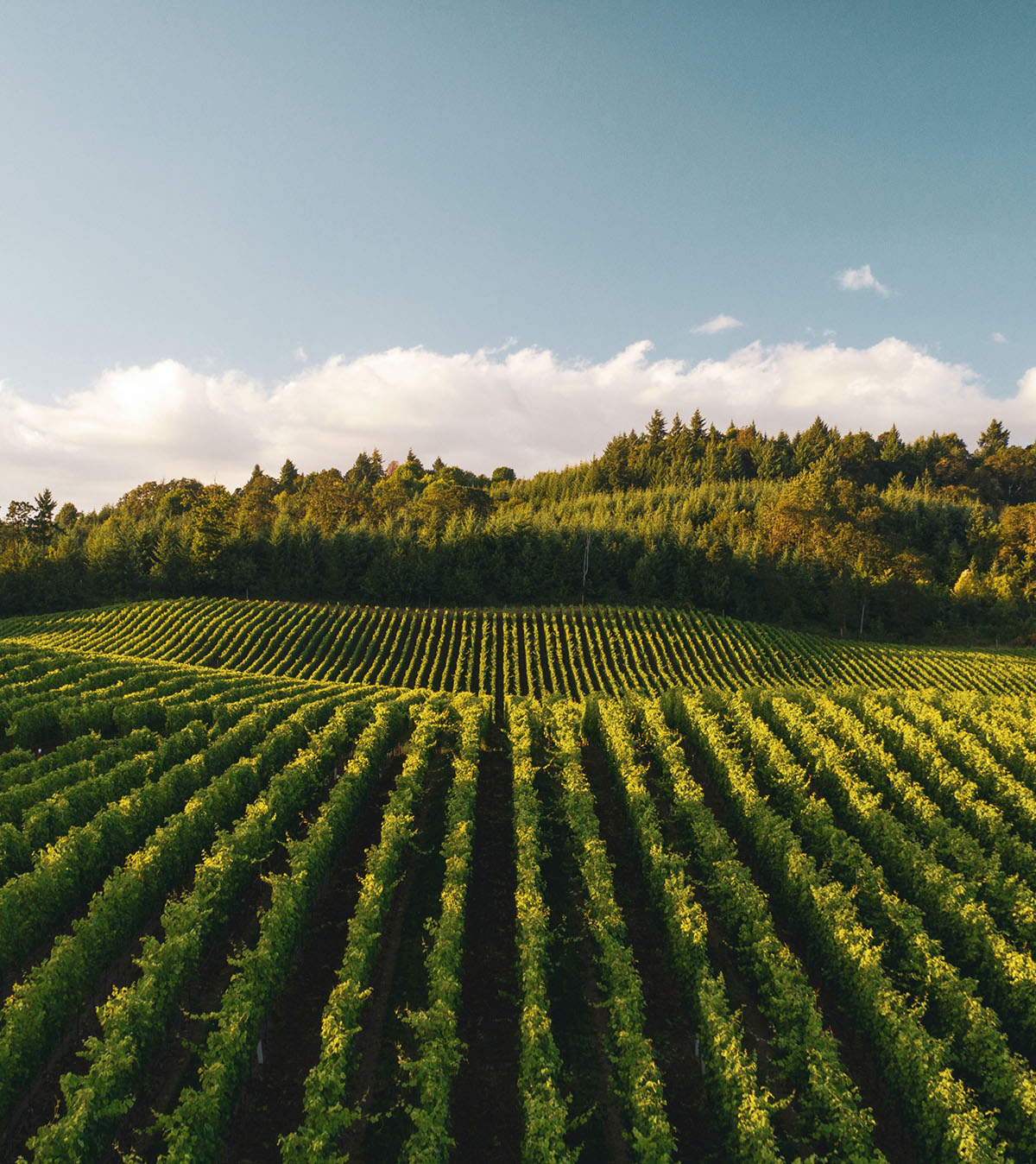Blue Horizon was founded in 2016 to invest in alternative protein start-ups with a mission to take animals out of the food chain. Since then, we have morphed into a global leader in impact investing focusing on the transition to a sustainable food system. We are driven by our conviction that the acceleration of the global transition to a Sustainable Food System will deliver outstanding returns for investors and the planet.

INVESTING
FOR A
SUSTAINABLE
FOOD SYSTEM
Annual Impact &
ESG Report 2021
OUR MISSION IS TO
ACCELERATE THE TRANSITION
TO A SUSTAINABLE FOOD
SYSTEM THAT DELIVERS
OUTSTANDING RETURNS FOR
INVESTORS AND THE PLANET.
Our portfolio extends from seed investments in innovative, early-stage start-ups to emerging global leaders. We back and support promising ideas and growing companies aligned with our values and mission. We take a lifecycle approach to companies we invest in, with the resources and conviction to support the founders’ progression from idea inception to exit. Our companies disrupt the unsustainable business models in agriculture, food production and distribution and offer visionary solutions at the intersection of agriculture, technology and biology.

We invest with a mission to deliver a Double Positive, with a focus on both attractive financial returns for investors, and measurable positive impact returns for the planet, humans and animals.
>10x
MARKET PENETRATION BY ALTERNATIVE PROTEINS BY 2035
70+
COMPANIES
FUNDED
42%
REVENUE GROWTH (INVESTMENTS)
53%
FEMALE
FOUNDERS
>3X
TARGET INVESTMENT
RETURNS
3
UNICORNS FUNDED
SO FAR
OUR INVESTMENT
THESIS

SEED

VENTURES

ROLL-UPS

GROWTH
Since 2016, we have successfully invested in sustainable food companies due to breakthroughs across agriculture, biology and technology that accelerate the development of new products as well as production and delivery methods. Our target sectors include, but are not limited to, sustainable food products, sustainable food production, sustainable food packaging and delivery, and business models that address food waste and recycling. We invest holistically in a Sustainable Food System, with an end-to-end approach extending beyond consumer food products, and ranging from better crop practices to sustainable packaging and more innovative distribution. As biotechnology evolves, we also look into sectors that are leveraging the similar biotechnologies used in the food system transition, such as healthcare and pharmaceuticals.

SEED

VENTURES

ROLL-UPS

GROWTH
OUR APPROACH
TO IMPACT & ESG
OUR CORE BELIEFS
01.
Double Positive
In the transition to a Sustainable Food System, impact and financial returns are complementary and mutually reinforcing — we strive to drive a Double Positive on top-tier impact and financial returns, which we measure by the IQRR™ and IRR of our investments.
02.
Net Positive Impact
Our investments should make a net positive impact on the planet, humans and animals.
03.
ESG Factors
Our portfolio companies should be mission-aligned and focused on the longterm, with sustainable business practices and operations, measured by ESG factors.
01.
Double Positive
In the transition to a Sustainable Food System, impact and financial returns are complementary and mutually reinforcing — we strive to drive a Double Positive on top-tier impact and financial returns, which we measure by the IQRR™ and IRR of our investments.
02.
Net Positive Impact
Our investments should make a net positive impact on the planet, humans and animals.
03.
ESG Factors
Our portfolio companies should be mission-aligned and focused on the longterm, with sustainable business practices and operations, measured by ESG factors.
IQRRTM IoCETM
We coined new metrics to quantify the impact of our investments.
Our proprietary Impact & ESG assessment process is integrated into our investment process from pipeline building through our investment decision and ownership to exit. The process tends to start relatively qualitative and evolves into a quantifiable model, where we assign both an Impact Quality (IQ) score and ESG score for each company at the time of investment that we reassess formally on an annual basis. As we use our Quantified Market Model (QMM) for identifying attractive investment opportunities, we leverage our Impact Quality Model (IQM) to derive a Theoretical Impact Value for each portfolio company, which allows us to calculate an Impact Quality Rate of Return (IQRRTM) over time, similar to an Internal Rate of Return (IRR) for an annualized financial return on an investment. Every investment is assessed via a theoretical impact value enabling us to calculate an indicative Impact on Capital Employed (IoCETM).
IQRRTM IoCETM
We coined new metrics to quantify the impact of our investments.
OUR IMPACT AMBITION
We strive to deliver positive and measurable impact on the planet, humans and animals, and apply our impact lens to quantify our impact targets.

PLANETARY
IMPACT
Supporting the transition towards a Sustainable Food System, while reducing adverse planetary impact like GHG emissions and optimizing the use of scarce natural resources like land and water.

HUMAN
IMPACT
Promoting mass access to high- quality, nutritious and tasty food for a growing global population, contributing to food-based solutions to human health challenges, and addressing risks posed by zoonotic disease and microbial resistance linked to agriculture.

ANIMAL
IMPACT
Promoting a healthier biosphere through biodiversity and animal welfare and providing alternatives to animal-based agriculture and production systems.
WE FOCUS ON WHAT
A COMPANY DOES
AND HOW A
COMPANY OPERATES
Impact Framework
We evaluate and measure the Impact Quality (IQ) of a company by analyzing what a company does and the impact its products or services have on the planet, humans and animals.
Environmental, Social and Governance Framework
We evaluate and measure the ESG Score of a company separately by analyzing its management policies and practices and internal operations. We consider this by looking at how a company operates.
WE FOCUS ON WHAT
A COMPANY DOES
Impact Framework
We evaluate and measure the Impact Quality (IQ) of a company by analyzing what a company does and the impact its products or services have on the planet, humans and animals.
AND HOW
A COMPANY OPERATES
Environmental, Social and Governance Framework
We evaluate and measure the ESG Score of a company separately by analyzing its management policies and practices and internal operations. We consider this by looking at how a company operates.
3,109
tCO2e*
SCOPE 1
8,701
tCO2e*
SCOPE 2
3M
ANIMAL LIVES
SAVED
UN SDGs
Alignment with the 17 UN SDGs is a natural output of our framework and investment process
UN PRI
Blue Horizon is a signatory to UN PRI since 2021
ESG DATA
CONVERGENCE
INITIATIVE
Blue Horizon is a participant in the ILPA’s ESG Data Convergence Initiative
SFDR 9
Our Impact & ESG framework naturally aligns and is compliant with SFDR 9
QUANTIFYING IMPACT & ESG
Our robust and proprietary framework seeks to measure and monitor relevant and material KPIs for Impact & ESG
IMPACT
An overall score for planetary, human, and animal impact is provided on a scale of 1 to 5. These assessments are determined by evaluating the impact of the products or services offered by the company to those planetary, human, and animal elements compared to market practice for comparable companies.
ENVIRONMENTAL, SOCIAL + GOVERNANCE
ESG criteria are selected to address a broad range of material issues to the business and its stakeholders, including employees, customers, investors, and communities. We identify a set of metrics and qualitative assessments compiled from company-provided information through a targeted questionnaire, including 3 years of history, to the extent possible. ESG factors are evaluated on a scale of 1 to 5.
FROM SEED TO GROWTH:
FROM SEED TO GROWTH:
OUR PORTFOLIO SDG ALIGNMENT
Sustainable Food Systems will not only end world hunger and lead to a positive planetary impact, but they can help the world achieve critical progress on all of the UN’s Sustainable Development Goals.
Sustainable Food Systems will not only end world hunger and lead to a positive planetary impact, but they can help the world achieve critical progress on all of the UN’s Sustainable Development Goals.

Goal 1: No Poverty
Over the past few years, extreme poverty has increased, and it is forecasted that the global poverty rate will be at 7% in 2030. Sustainable Food Systems can contribute to eradicating poverty by creating good jobs, improving access to food, and supporting healthy communities.
Number of portfolio
companies aligned

Goal 2: Zero Hunger
In 2019 and 2020, world hunger was exacerbated, and it is estimated that the prevalence of undernourishment increased to 10% between 2019 and 2020. Sustainable Food Systems are essential for ending hunger challenges and managing acute shocks, like disease outbreaks and extreme climate conditions.
Number of portfolio
companies aligned

Goal 3: Good Health and Well-being
A decade of progress in reproductive, maternal, and child health could be stalled or reversed as health workers are in short supply in many regions. Sustainable Food Systems will support adequate nutrition, ensure healthy lives, and promote well-being for all ages.
Number of portfolio
companies aligned

Goal 4: Quality Education
The COVID-19 pandemic has wiped out 20 years of education gains, with 9% of children in grades 1 through 8 falling below minimum reading proficiency levels in 2020. Sustainable Food Systems will enable students to have a healthy and balanced diet, which is critical to success at school.
Number of portfolio
companies aligned

Goal 5: Gender Equality
Women have continued to be a minority in the labor force. Sustainable Food Systems can empower, support, and bolster women’s livelihoods worldwide by providing food security.
Number of portfolio
companies aligned

Goal 6: Clean Water and Sanitation
Billions of people still lack access to safe drinking water, sanitation, and hygiene. Sustainable Food Systems can ensure the sustainable use of water and increase safe access to drinking water while also reducing the amount of pollution in our natural water systems.
Number of portfolio
companies aligned

Goal 7: Affordable and Clean Energy
Accelerated action on modern renewable energy is necessary for the transition to a Net Zero economy. Sustainable Food Systems maximize the use of clean and renewable energy sources, reducing the food system’s negative environmental impact.
Number of portfolio
companies aligned

Goal 8: Decent Work and Economic Growth
The COVID-19 pandemic has led to 255 million full-time jobs losses, 4x more than during the global financial crisis. Sustainable Food Systems can create new jobs and support the incomes of billions of people around the world.
Number of portfolio
companies aligned

Goal 9: Industry, Innovation, and Infrastructure
Global manufacturing has fallen by 6.8% in 2020. Innovation is essential for scaling up manufacturing and infrastructure for Sustainable Food Systems to benefit people and the planet.
Number of portfolio
companies aligned

Goal 10: Reduced Inequalities
GINI index for emerging markets and developing countries has increased by 6% in 2020. Sustainable Food Systems can reduce poverty and provide jobs and income.
Number of portfolio
companies aligned

Goal 11: Sustainable Cities and Communities
Living conditions in slums and low-income housing remain dire. Sustainable Food Systems can ensure purchasing power and access to nourishing food for city dwellers.
Number of portfolio
companies aligned

Goal 12: Responsible Consumption and Production
The global material footprint has increased by 70% between 2000 and 2017. By 2020, a total of 700 policies and implementation activities were reported under the 10-year framework of programs on sustainable consumption and production. Sustainable Food Systems reduce waste and spoilage and empower consumers to make smart choices in their food shopping.
Number of portfolio
companies aligned

Goal 13: Climate Action
GHG concentrations reached new highs in 2020, which requires economies to shift towards carbon neutrality. Sustainable Food Systems can reduce the negative climate impact by lowering emissions of GHGs, especially methane and carbon dioxide.
Number of portfolio
companies aligned

Goal 14: Life Below Water
Over three billion people rely on oceans for their livelihood. However the sustainability of the oceans is under severe threat due to marine pollution, ocean warming, eutrophication, acidification, and fisheries collapsing. Dead zones are rising at an alarming rate, from 400 in 2008 to 700 in 2019. Sustainable Food Systems ensure the long- term viability of the world’s fisheries while also protecting the health of the ecosystems that host them.
Number of portfolio
companies aligned

Goal 15: Life on Land
More than a quarter of species assessed by the IUCN red list are threatened with extinction, and progress in safeguarding key biodiversity areas has stalled over the last 5 years. Sustainable Food Systems can reduce deforestation and support healthy terrestrial ecosystems while providing critical sustenance to people worldwide.
Number of portfolio
companies aligned

Goal 16: Peace, Justice, and Strong Institutions
The COVID-19 pandemic has intensified children’s risk of exploitation, including trafficking and child labor. Sustainable Food Systems can reduce critical stresses facing families, communities, and nations around the globe, preparing the ground for peace and strong institutions to take hold.
Number of portfolio
companies aligned

Goal 17: Partnerships for the Goals
63% of low-income and lower- middle-income countries need additional financing for data and statistics to face the challenges posed by the pandemic. Sustainable Food Systems can deliver tangible benefits to communities around the world.
Number of portfolio
companies aligned